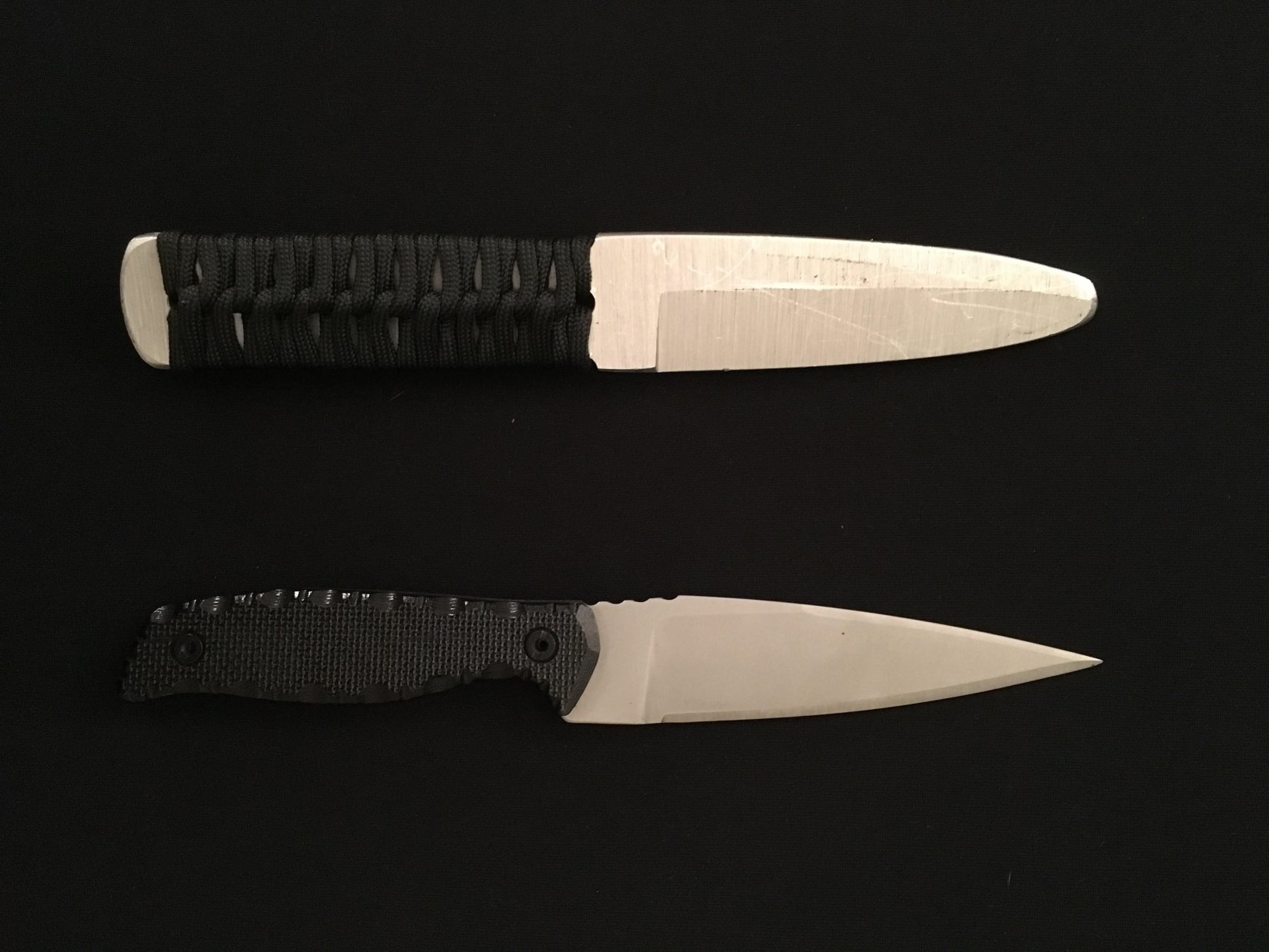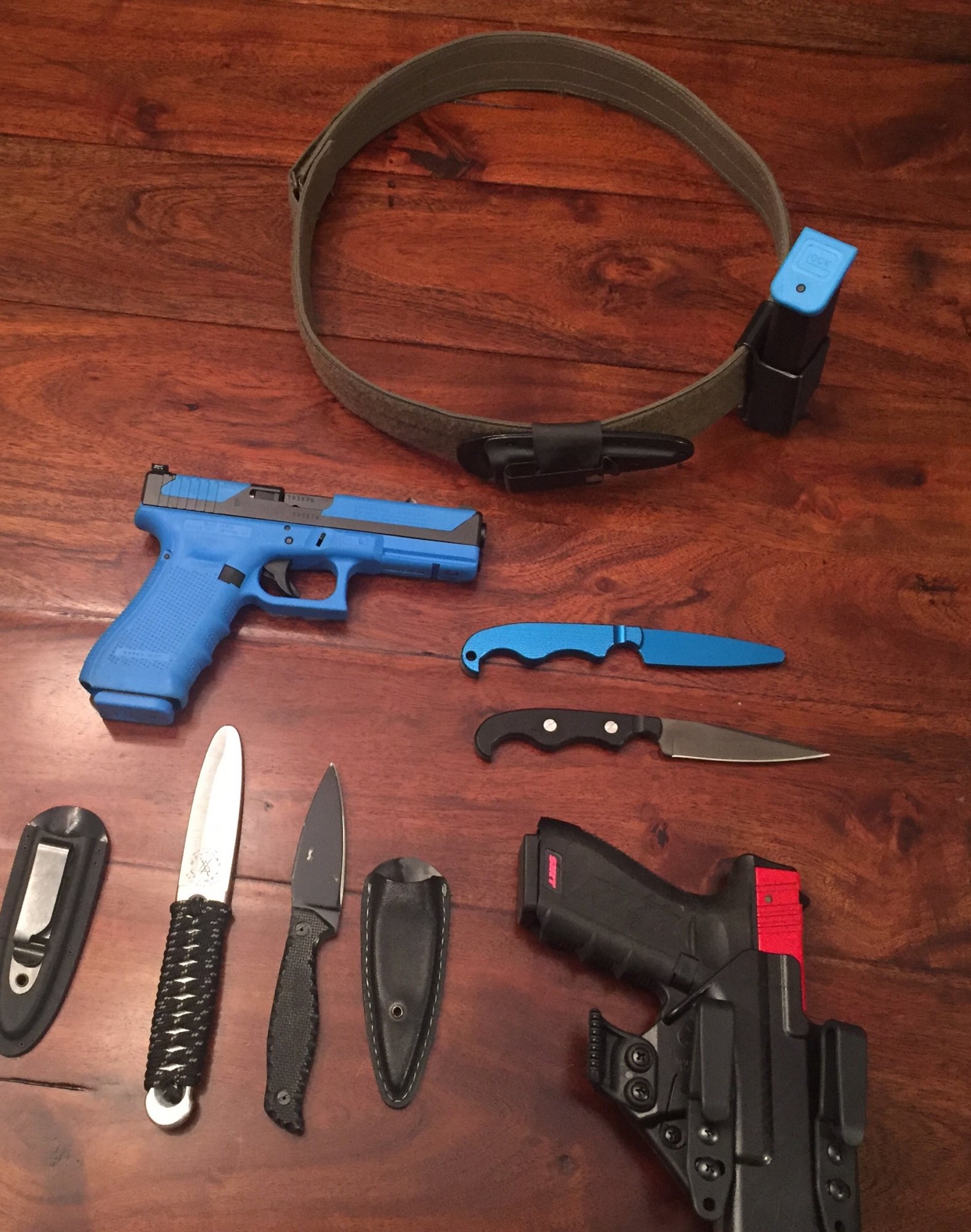
January 25, 2016
I recently attended a 5-Day Integrated/Integrative Combatives course that was taught by Kyle Defoor of Defoor Proformance Shooting and Tuhon Tom Kier of Sayoc Tactical Group (STG). I wanted to share this AAR with the shooting community because I thought it was incredibly valuable training and relevant based on current events. I’ve been training with STG for a long time, and have grown to love the system. I’ve also talked with Tuhon Tom many times about a training course that combined both combatives and shooting into one comprehensive training course. I’ve been trained in multiple martial arts and have been able to take techniques from each system and make them work for me in the combatives environment. What I hadn’t done or attended was training that combined both [hand-to-hand and/or edged weapons] combatives AND shooting. When Tuhon Tom told me that STG would be running an Integrated Combatives Course with Kyle, I jumped at the opportunity to attend. This course offered the added bonus of having a guest instructor, Bill Rapier from American Tactical Shooting Instruction. I trained with Bill when he was with Naval Special Warfare (SPECWAR), and was looking forward to training with him again.

As expected, this course was exactly what I wanted. The course was well structured, and each day was broken down in a logical manner. Each session and day built on the last training evolution. Each morning began with basic tactical training that was civilian Concealed Carry Permit (CCW) holder-appropriate. The tactical training was mostly comprised of basic room entry/clearing techniques, moving through hallways and stairways–all very useful techniques, which validated another training course I had taken in the past. After lunch we would do edged weapons targeting chains and empty-hand combatives. What I liked about these techniques and evolutions was that they were well thought-out and worked together in combination with each other. More importantly, to me anyway, was that each technique could be incorporated into the draw stroke of my concealed handgun (semi-auto pistol). So, not only did the techniques integrate well with each other, but they also were easily incorporated into a draw stroke. This was a very important training gap that was filled for me via this course. Another important area that was covered was weapons retention both in and out of the holster. STG showed various technique options for weapon retention using a variety of empty hand, edged weapons and improvised weapons. The students were provided with many options to choose from and could incorporate the ones that worked best for them.
The remainder of the training day was spent doing dry runs of the room clearing techniques, tactical training, and force-on-force scenarios. All of the instructors were former members of Naval Special Warfare and had a significant amount of operational experience. Having access to instructors with this level of operational experience was of great value to all the students. What most impressed me about STG, Bill and Kyle was their ability to teach to the “target audience” and break down the training to a level that was appropriate for the students’ respective skill levels.

The instructors would run 4 different scenarios that allowed us to work the various modules we’d learned throughout the day. No training time was waisted, which I really appreciated. Kyle, Bill and STG made sure that the students were constantly engaged, and they offered enough options for each student to drill in areas that they wanted or on which they felt they needed more work. Kyle, Bill, and Tuhon Tom were available to answer questions, and the training environment was relaxed and very conducive to learning.

An important note on the force-on-force scenarios: each one of these scenarios was perfect for CCW holders. Each scenario was realistic. A civilian CCW could easily find themselves in any of these scenarios in real life. None of it was unrealistic “Call of Duty” scenarios that, while fun and something new to expose students to, don’t provide any real training value for civilian CCW holders, in my opinion. I know there’s a market for shooting courses that expose students to SWAT-style building clearing and dynamic CQB/CQC (Close Quarters Battle/Close Quarters Combat) force-on-force gunfighting scenarios. This course is not that, which is why I found real value in it. Please don’t misunderstand, there is indeed a need for anti-terrorism/counterterrorism and active-shooter team training in the US, but I feel that training is more suited for tactical team members and law enforcement professionals who have a duty to respond to that threat. Current CCW holders need training that will provide them skill sets that will allow them to protect themselves and respond to threats in a responsible, effective manner. This course does just that. These scenarios also afforded me an opportunity to test out my first-line gear, and reaffirm that I had my gear positioned when I needed it. I was offered plenty of drill time to do that very thing.

At the conclusion of each day, after dinner, Tuhon Tom and the STG instructors would provide presentations on a variety of topics. These topics included improvised weapons, edged weapons and combat mindset. The instruction on combat mindset was particularly interesting. It’s an area of training that’s usually overlooked, but probably the most important training in which you can engage. STG used this time to review real-life surveillance videos of assaults and shootings to enhance combat mindset and show how the combatives we learned would have applied in these scenarios. It was also valuable to see what Tuhon Tom identified as attack indicators, and how violent criminals “posture” [demonstrate body language] before attacking civilians.
The bottom line is, this course is very well run and extremely valuable for CCW holders who want a completely comprehensive baseline skill set that covers combatives, weapons retention, improvised and edged weapons, and combat mindset. This course is perfect for anyone who wants to prepare to defend themselves in an effective and responsible manner.











 Reply With Quote
Reply With Quote